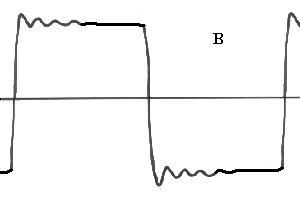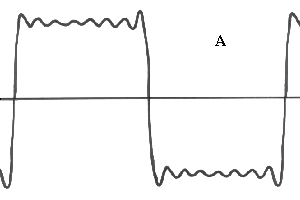Quote:
Originally Posted by milkweg /img/forum/go_quote.gif
http://theaudiocritic.com/plog/
Proven: Good Old Redbook CD Sounds the Same as the Hi-Rez Formats
Incontrovertible double-blind listening tests prove that the original 16-bit/44.1-kHz CD standard yields exactly the same two-channel sound quality as the SACD and DVD-A technologies.
In the September 2007 issue of the Journal of the Audio Engineering Society (Volume 55, Number 9), two veteran audio journalists who aren’t professional engineers, E. Brad Meyer and David R. Moran, present a breakthrough paper that contradicts all previous inputs by the engineering community. They prove beyond a shadow of a doubt, with literally hundreds of double-blind listening tests at matched levels, conducted over a period of more than a year, that the two-channel analog output of a high-end SACD/DVD-A player undergoes no audible change when passed through a 16-bit/44.1-kHz A/D/A processor. That means there’s no audible difference between the original CD standard (“Red Book”) and 24-bit/192-kHz PCM or 1-bit/2.8442-MHz DSD.
|
It seems you can «prove» everything by means of DBT. We already had amps sounding the same, there was a link demonstrating that good speakers can't be identified in a blind comparison with a live band, and now this about audio formats... As if all A/D and D/A converters sound identical, hence are perfect...
I'm telling nothing new, but to some it may be new nonetheless: The main issue addressed by some audiophile CDP/DAC manufacturers (Theta, Wadia, Burmester, EMM Labs, Pioneer...) was and is the sharp low-pass filter at ~21 kHz needed for suppressing aliasing. This has nothing to do with missing ultrasonics, but with the fatal consequences for the audible range. Every filter -- every nonlinearity generally -- is harmful for transient response. The sharper and steeper, the worse. Now the classic anti-aliasing filter designated for the CD format has extreme sharp- and steepness (according to the established Nyquist concept it would ideally have even infinite sharp- and steepness). In this form it's called «reconstruction filter». Why? Below a graph with a schematic illustration of high-frequency sine waves stored on a CD -- before low-pass filtering.

What can be seen here is a distinct beat (amplitude modulation). It's an inevitable product of the interference between sampling frequency and signal frequency. And it shows the compromise that has been made in the high frequency range in order to get away with a relatively low sampling rate (remember the state of technology when the CD was invented!).
Here's another source addressing this issue.
«No problem!» is the tenor of the Nyquist apologists. Because there's the classic «reconstruction filter» designed exactly for this purpose. Indeed: After being smoothed with the classic implementation of the anti-aliasing filter, the curves have turned into immaculate sine waves. But what's actually happened? Well, the sharp filter implicates a resonance showing up in square-wave and pulse response.
. .
(Some don't like the term «resonance» in the context of electronics, but the discrimination is academic. Although the filter resonance is a consequence of a purely mathematical function -- the
Gibbs phenomenon --, in contrast to stored kinetic energy in the case of sound transducers, the result is exactly the same.) This resonance completely smoothes out the amplitude modulation. So far so good. But now imagine a scenario with an original signal catched by the microphone exactly corresponding to the amplitude-modulated sine wave above (and below). Again the «reconstruction filter» makes a continuous sine wave out of it. Correspondingly it makes the same -- smoothing and «(time-)smearing» -- with every other form of transients in an existing signal.
Without a classic «reconstruction filter» (but a smoother slope instead) the response looks like this:
The measured high-frequency drop-off is the result of the amplitude modulation. Both phenomena -- HF drop-off and amplitude modulation -- show up in every Wadia player. Filterless DACs behave exactly the same, as they also renounce any form of FR reconstruction and AM smoothing.
To sum it up: «Reconstruction» in the term «reconstruction filter» merely addresses frequency response and completely ignores the time axis, thus impulse response. Nevertheless, some people still consider the transient corruption that comes with it inaudible -- for some reason --, a common reasoning is that the human hearing is relatively insensitive to transients, in contrast to frequency response issues. IMO this approach is quite arbitrary. A relative insensitivity -- even if it's true -- is still not the same as absolute insensitivity.
My Corda Symphony, more precisely its audiophile on-board DAC, allows for different filter settings:
The audible impact is subtle, but quite clear nonetheless once you're familiar with the over-all characteristic of this device. My favorite filters are number 2 and 3 below (with 8x oversampling):
Note the identical frequency response! -- Switching between the two means deciding between relatively dry, accurate overtones and opulent overtone brilliance combined with a slightly more organic characteristic. That said, the fact that there's a sonic difference at all also means that the ringing is perfectly audible -- despite the prevalent belief that it is not among technocratic circles.
There was another experience that convinced me of the harmfulness of redbook CD's high-frequency cut-off. -- Maybe you know what a Meier-Audio «Analoguer» is. To those who don't: it's a low-pass filter circuit meant to make up for the digital glare with CDs, implying about the same 3.5-dB drop-off at 20 kHz as in the above graph.
With CDs, it provided a nice, smoother alternative to the standard sound, neither better nor worse. With SACDs, though, it killed all of the format's superiority, consisting of higher detail and definition as well as enhanced airiness.
So as far as I'm concerned, when it comes to sound quality, the verdict about redbook CD and hi-rez is quite clear. That's why I gave «Higher sampling frequency» a score of 33 after all.





















